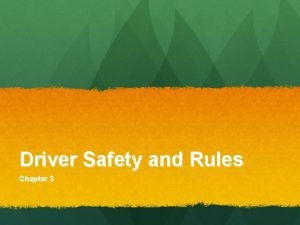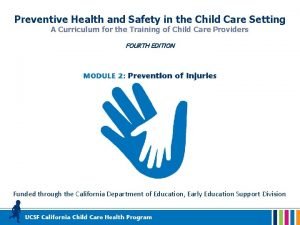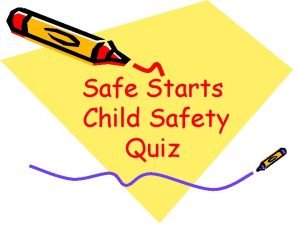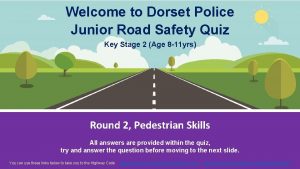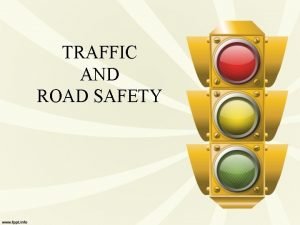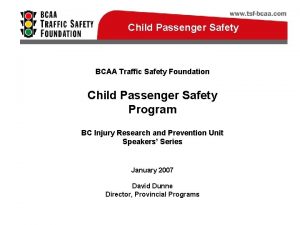CHILD ROAD SAFETY Andrew Colski Road User Safety









- Slides: 9

CHILD ROAD SAFETY Andrew Colski, Road User Safety Division, Df. T


Casualty types • Pedestrians account for more than 60 per cent of child KSI casualties. • Around two thirds of child KSI casualties are male • Almost half of all child KSIs are aged 12– 15 and casualty rates in this age group are much higher than for younger children. • The number of KSIs has fallen less than for other child age groups, by around 45 per cent since the baseline.

Child 0 -15 KSI casualties by type GB 2007

Child 0 -15 KSI casualties by age GB 2007

International comparisons • While GB has a good road safety record overall, our performance on child deaths, and in particular child pedestrian deaths, compares less well with other countries. • Reasons for this include environmental and behavioural factors • more pre-1914 housing, • more journeys involving main roads to get to school, shops, leisure etc, • more children living on or near main roads, • more children out unaccompanied and at an earlier age. • Our performance on child pedestrian deaths is improving – but so are other countries.



Disadvantage • Disadvantage remains a factor, especially for child pedestrian casualties. • The pedestrian casualty rate (all severities) for those aged under 17 is around four times greater for those living in the 10% most deprived areas than in the 10% least deprived areas. • Similar reasons - environment and behaviour
 Single user and multi user operating system
Single user and multi user operating system Single user and multi user operating system
Single user and multi user operating system 이진트리 복사 순회
이진트리 복사 순회 Paved road vs unpaved road
Paved road vs unpaved road Whenever possible, child car safety seats should be placed
Whenever possible, child car safety seats should be placed Child protection and toy safety act
Child protection and toy safety act Preventive health and safety in the child care setting
Preventive health and safety in the child care setting Cscal texas
Cscal texas Child safety quiz
Child safety quiz Dorset road safety
Dorset road safety




